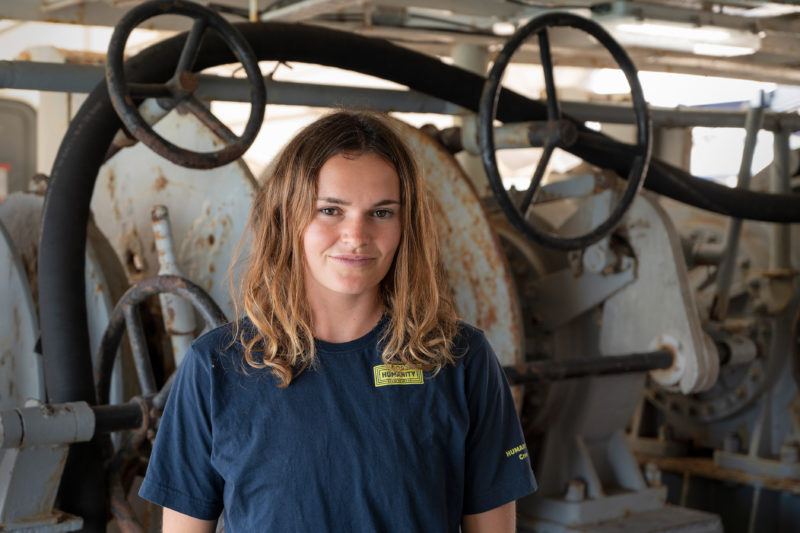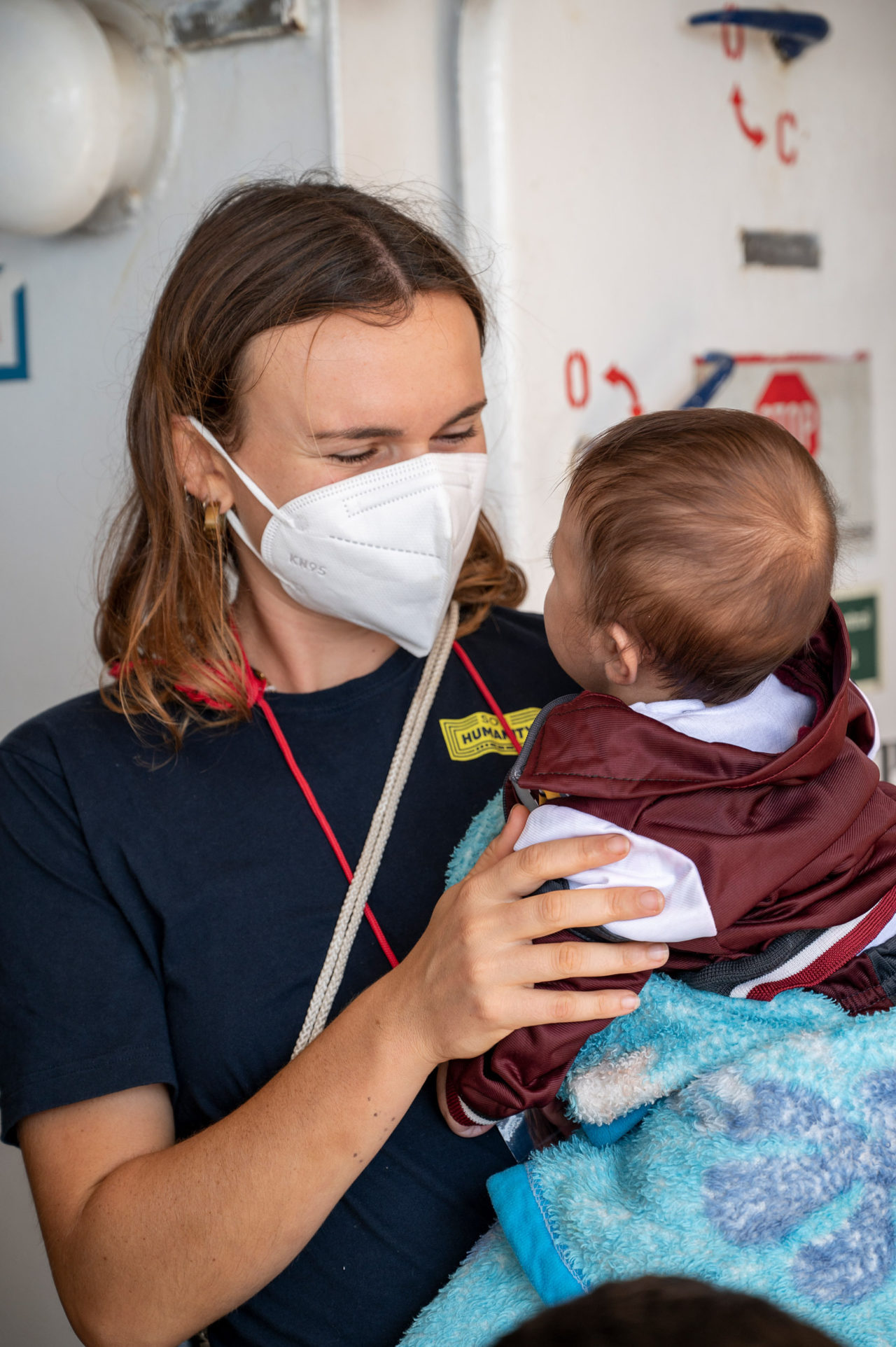Tegan, Humanity 1 RHIB Support

No matter how prepared you are, the realities of hostile Europe are – and should be – shocking
Tegan Louis-Puttick, support on the speedboats on our first rotation, warns against seeing the sight of people in an overcrowded boat on the Mediterranean as normal. In the article published on Focus Online on Monday 14 November 2022, she reports on her experiences on board the Humanity 1:
Seeing large groups of people packed tightly into a small boat, adrift in the Mediterranean Sea, has become a normality in the media during the past decade. Yet such a sight is, and must remain, something shocking, abnormal, and a clear sign of the failure of European responsibilities to provide safe asylum routes and a sufficient search and rescue service.
As a member of the speedboat (RHIB – Rigid Hull Inflatable Boat) crew onboard the rescue ship Humanity 1, I was part of the team who were first to witness and make contact with boats in distress during rescue operations. Hours before the rescues took place, we were often made aware of a case through sources such as Alarmphone, a hotline for people in distress in the central Mediterranean.
At this point, the preparations to be ready for rescue kicked in. I began mentally preparing for the situation we might encounter, running through past rescue experiences, potential scenarios and operational procedures in my head. In order to spot a tiny boat in a wide expanse of sea, we initiated double watches from the bridge (the control centre and highest point of the ship). We checked the RHIBs for fuel and supplies, while the deck team prepared them in order to be launched as fast as possible as soon as we arrived on scene. The radio call ‘SAR team, SAR team, briefing in five minutes’ became familiar; we discussed the upcoming operation in as much detail as possible prior to rescues, even whilst knowing that some things cannot be anticipated.

Yet despite these stages of preparation, as well as past experiences of seeing small, unseaworthy vessels loaded down with people seeking safety, the first sight of a boat in distress remains shocking for me. Not because I hold any illusion that Europe does not have racist attitudes towards those experiencing forced displacement who seek safer futures away from their home countries.
The feeling of being appalled, struck by outrage, that people are forced into such risky journeys comes from my certainty that this situation should not, and cannot, be accepted as normality – despite its increasing perception as such. Safe routes to seek asylum in Europe should be in place. Providing sufficient sea rescue services is a state responsibility under international maritime law, which must be upheld. A situation in which over 1,838 people drown in one year trying to cross the Mediterranean is deeply, disturbingly abnormal.
Thus during each of the four rescues we were able to carry out during Humanity 1’s first mission, the initial approach was always the most striking moment – a point of stark clarity before the adrenaline and action took over. During the first rescue, as our RHIB crested a small wave, the boat in distress was sitting so low in the water that I barely glimpsed it before it sank away again behind another piece of chop. The dusky sunset light added to the sense of obscurity and eerie calm; as night fell, we carried out the rescue in the dark, taking individuals one by one onto the RHIBs and driving them back to the ship with waves spraying over our bow. ‘It’s okay, it’s okay, we don’t mind now’, one person laughed, as I apologised for the shower of salty water. ‘Now we are safe’.
By contrast, our last rescue took place with a dramatic backdrop of two enormous cargo ships, which dwarfed the boat in distress – despite this vessel itself being unusually large, an old, battered pleasure craft carrying 207 people. With eighty-eight children onboard, many of them under the age of 5, the rescue was intense; the high freeboard (distance between the vessel’s deck and the waterline) meant precise manoeuvring was crucial, and I felt relief every time someone was safely transferred to our RHIB.
Yet regardless of the different elements that made each rescue scenario unique, the initial jolt as we arrived on scene was the same each time. I hope to preserve this feeling of shock as I continue to work in emergency response at sea, or when I see images of rescues online. We cannot, and should not, become desensitised to the fact that any number of people being forced to crowd onto an unseaworthy boat to access their right to safe futures is an abnormality, flying in the face of sanctimonious European claims to protect and uphold the human rights of every individual.